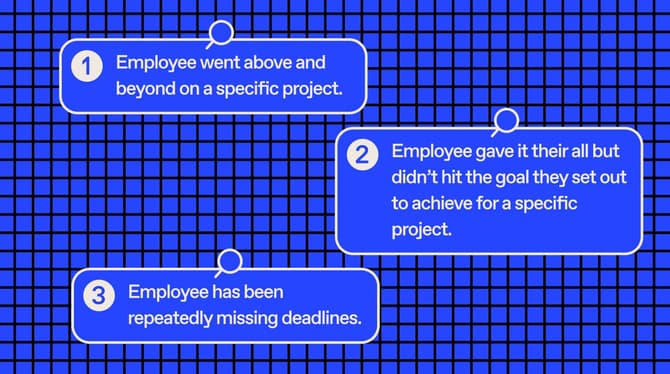Workplace surveys are a great way to help boost morale, improve employee engagement, and maintain company values. But the pressing question is: which employee surveys will benefit your organization the most? Let's explore Pulse Surveys vs. engagement surveys.
The main difference between Pulse Surveys and engagement surveys is frequency. Annual surveys offer a general overall perspective into your employees' experiences with the company.
Pulse Surveys allow you to maintain company health and happiness with quicker and more frequent check-ins.
This article discusses the key differences between a Pulse Survey and an engagement survey to help you determine what action plans might offer your company the best employee satisfaction and retention results.
Assess your organization’s employee experience in minutes

What's what for engagement surveys and Pulse Surveys
Annual employee engagement surveys
In most companies, employee engagement surveys traditionally happen once per year. Usually, human resources (HR) sends out an annual survey asking staff about:
- Employee experience
- Workplace values
- Management feedback
- Business process opinions
By sending in-depth surveys, your organization's leadership can receive helpful insights and data about the past year to help the team form next year's action planning.
Why might you need an annual employee engagement survey
Employees want to feel valued. When you listen to team opinions and strive to make improvements, you can empower everyone to stay with the company and work to achieve collective goals.
An annual engagement survey can help you learn how to:
- Give employees better resources and tools to improve their performance
- Support individual team members
- Place employees into positions you designed based on their skill sets
- Improve and reassess workloads
- Help develop long-term career goals
- Grow your role as a manager
How do annual employee engagement surveys work?
Learning about employee engagement without overwhelming your team with too many questions can be challenging. To measure employee engagement, you need to find a balance between asking enough questions to cover every base without creating survey fatigue.
Employee engagement surveys typically include at least 50 different questions that employees can respond to using rating scales. For example, you could ask employees how they feel about the number of vacation days they are entitled to, on a scale from one to 10.
To help you get started, try these employee survey questions, or opt for an employee survey tool like Officevibe which offers specially designed surveys to cover a broad range of workplace topics.
What do annual surveys measure, and how?
A yearly survey measures two main things:
- Employee sentiment—how each employee feels about their workload, managers, and day-to-day jobs.
- Management sentiment—how well company policies and the workplace environment empower organizational success.
To gain insights surrounding these topics, typically, an annual survey will ask for opinions on:
- Organizational changes
- Office culture
- Company values
- Work conditions
- Job fulfillment and satisfaction
- Compensation and benefits
- Career outlooks
Your management team can track engagement, measure employee retention, and outline future business trends using the survey results.
Annual employee engagement survey benefits
The benefits of providing an annual survey include the ability to:
- Send everyone the same survey to gain valuable company insights.
- Learn how to improve retention rates.
- Gather feedback on a variety of different topics at the same time.
- Discover unexpected trends in employee feedback.
- Measure data against previous years.
- Understand how the team views the company name and mission.
- Determine how employees perceive the organization's culture.
Are there any cons to only using an annual employee survey?
You will find drawbacks to limiting yourself to only one annual employee survey. To explain, we'll use a metaphor: imagine that you only go grocery shopping once a year.
Of course, you can stock up on the essentials, but what happens if you decide that you want a salmon dinner next week and don't have any fish? This type of shopping wouldn't allow for meal variation or spontaneous cravings.
Now, if you go grocery shopping every week, you can explore fresh new options and always have what you're in the mood to eat.
The same theory applies to employee feedback survey frequency. Of course, you can gain a general overview of how everyone's doing, but you will never receive specific, real-time insights.
Employee Pulse Surveys
Pulse Surveys are short and frequent surveys that allow you to consistently collect employees' opinions so that you can respond with immediate action. Regular feedback helps you improve your business every day, not just once per year.
Officevibe's employee Pulse Survey tools rely on three basic foundations:
- Regular questionnaires at weekly, bi-weekly, or monthly intervals
- Real-time data and long-term insights
- Employee anonymity for accurate responses
Why might you need an employee Pulse Survey?
The State of Work Report by Slack found that 84% of employees enjoy a greater feeling of job value, purpose, and satisfaction when they can adequately understand the company's strategy. So how can you ensure that your employees understand their importance?
Officevibe Pulse Survey data shows that 96% of employees said receiving regular feedback is a good thing. Offering an opinion outlet and communication channel can help employees understand their value.
Pulse Surveys allow you to:
- Gain more accurate insight into employee emotions and the organization's culture.
- Learn about what's happening around the office right now.
- Provide employees the resources they need as soon as they need them.
- Discover recurring organizational trends and test different solutions.
- Encourage more feedback with shorter enticing surveys.
- Learn about what initiatives work well before allocating more resources toward them.
- Analyze data more quickly and easily with short, frequent feedback.
How do Pulse Surveys work?
Employee Pulse Surveys work by sending out a brief questionnaire to your team on a frequent schedule, based on any current issues, questions, or important items. Typically, organizations choose to send a Pulse Survey every week with 10 questions or fewer.
Next, you can use employee survey feedback to track engagement and improve business processes. Each week when new questions pop up at a meeting, jot them down, and add them to the next Pulse Survey!
What do Pulse Surveys measure?
Officevibe's Pulse Surveys measure 10 key metrics:
- Employee-manager relationship metrics help you support and understand each team member with relational intelligence.
- Feedback measurements help you understand the best practices for promoting team improvements. Officevibe Pulse Survey data found that 83% of employees really appreciate receiving feedback, regardless of whether it's positive or negative.
- Employees' personal growth metrics show how well employees feel they can build a career with your organization.
- Coworker relationships and team collaboration questions help you foster a more productive and happier team.
- Employee well-being tracking helps you promote positive work environments to avoid employee burnout.
- Team member appreciation feedback helps ensure that you know how to provide adequate employee recognition to keep employees motivated.
- Workforce alignment metrics empower your team to keep working toward the same goal.
- Overall happiness within the organization includes asking questions about work-life balance, stress, and work enjoyment. One-on-one meetings can help you build personal relationships with every employee.
- Job satisfaction metrics allow you to ensure that everyone is in the best position for their skillset, receives adequate pay, and can access the tools they need to succeed.
- Employee ambassadorship measurements help you understand if your team truly loves and advocates for the organization so that you can boost employee retention.
Pulse Surveys help managers and leaders measure engagement levels on their team and track trends over time by using 10 metrics and 26 sub-metrics of engagement with easy-to-read reports. Consider using a few questions for each of the above metrics to acquire actionable results.
Pulse Survey benefits
Frequent Pulse Surveys help you better understand how employees feel all of the time so that you can track positive changes. The data you receive from Pulse Surveys is far more accurate, relevant, and specific than an annual survey.
Other benefits that come with using Pulse Surveys include the ability to:
- Increase response rates with shorter questions than annual employee surveys.
- Receive fast and applicable weekly data each.
- Track long-term business goal progress to stay on track.
- Resolve any issues quickly.
- Monitor how the organization changes throughout seasonal or quarterly cycles.
- Make sure that your team has the resources they need every day.
- Adjust questions based on the previous week's results.
- Ensure that employees don't forget about important opinions with regular check-ins.
How can you use annual surveys and Pulse Surveys together?
Since annual employee surveys and Pulse Surveys each offer different benefits on their own, they become even more powerful when you use them in combination.
Sending Pulse Surveys weekly, biweekly, or monthly offers you quick and simple answers. Annual employee surveys provide much longer and more in-depth questions that allow you to contextualize how all survey responses relate to one another.
For example, let's say that only one employee responds to a Pulse Survey question saying that they struggle with staying focused during online meetings. Since it was just one person, maybe you don't investigate with further questions.
Then, in the long-form annual survey, the same employee explains that they have WiFi issues in their home office that make online meetings challenging. Now you can understand exactly how to provide resources to resolve this person's problem.
How can you choose the right survey for your team?
Choosing the best survey type for your organization is challenging. You want to ask just enough questions so that you do not miss out on valuable information without overwhelming the team with too many surveys.
Here are a few things to consider when choosing your survey strategy:
- The number of different organizations within the company that need varying questions.
- Any pressing business decisions that require immediate opinions.
- The company's flexibility and open-mindedness surrounding change.
- The overall survey's purposes and goals that you wish to achieve.
- Any HR hoops you may need to jump through to enable regular surveys.
Gain feedback in real-time
You don't need to wait until the end of the year to listen to your teammates' opinions. Everyone at your company has valuable and insightful ideas that can benefit how the entire organization operates, so why wait months to hear them?
Pulse Surveys offer an incredible opportunity to grow your business through consistent team collaboration. Gain a better view of what's happening around the office every week so that you can handle any hurdle.
You've come to the right place if you want to begin sending out Pulse Surveys but don't know where to start. Officevibe's Pulse Surveys include convenient templates, anonymous answers, simple response channels, and easy-to-analyze results.
Officevibe’s easy-to-use platform provides you with all the resources you might need to tap into the employee sentiment of employees in ways to enhance organizations' workplace environments.
Improve your team's engagement and get started for free today.
Equip HR and managers with tools to engage, recognize, and drive performance.




